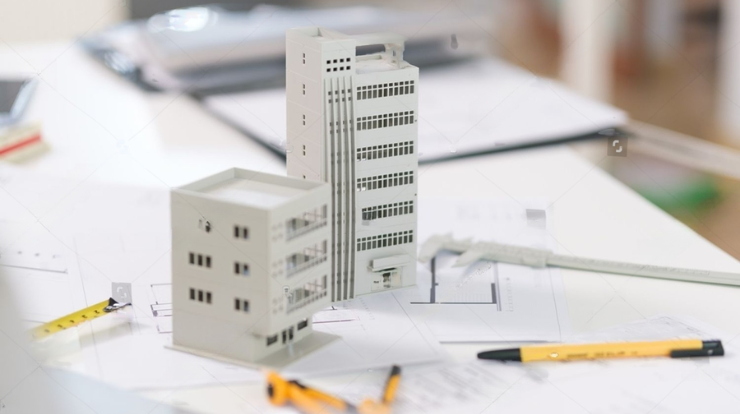As Dubai strives to become a global leader in technological innovation, its embrace of large-scale 3D printing is transforming the construction industry. This cutting-edge technology is enabling faster, more efficient, and cost-effective construction processes, allowing buildings to be completed in record time.
But how quickly can a large-scale 3D printed building be constructed in Dubai? This article explores the factors influencing the speed of 3D printed construction in Dubai, real-world examples, and the implications for the future of the city’s architecture.
1. The Speed of Large-Scale 3D Printing in Construction
The most significant advantage of 3D printing in architecture is the drastic reduction in construction time. Traditional construction methods can take months or even years to complete, depending on the size and complexity of the project. In contrast, large-scale 3D printing can deliver results in a fraction of the time.
In Dubai, builders use 3D printing technology to construct structures in just days or weeks, depending on the project’s scale and design. Automated 3D printers, which work around the clock, extrude building materials layer by layer with minimal human intervention, enable this rapid pace of construction. In Dubai, 3D printing technology is already being used to build structures in just days or weeks, depending on the project’s scale and design.
This ability to streamline the construction process eliminates the delays typically associated with labor, material shortages, and weather conditions.
2. Real-World Examples of 3D Printed Buildings in Dubai
Dubai has already seen the successful implementation of large-scale 3D printed buildings, showcasing the speed and efficiency of the technology. Below are some notable examples that illustrate how quickly these projects can be completed.
The Office of the Future: Built in 17 Days
Dubai made headlines in 2016 with the construction of the Office of the Future, the world’s first 3D printed office building.
This 250-square-meter building was printed and assembled in just 17 days, a remarkable achievement compared to traditional construction timelines. The project used a large 3D printer that measured 20 feet high, 120 feet long, and 40 feet wide, with minimal on-site labor required for assembly.
Dubai Municipality’s Administrative Building: Completed in Two Weeks
In 2019, Dubai broke another record by constructing the world’s largest 3D printed building, a 640-square-meter administrative building for the Dubai Municipality.
The building was completed in just two weeks, with only three workers operating the 3D printer. The construction process used a special concrete mixture optimized for 3D printing, significantly reducing the overall construction time and labor costs.
Housing Projects: Potential for Rapid Completion
In addition to office buildings, Dubai has been experimenting with 3D printed residential homes. The city aims to leverage 3D printing Dubai technology to quickly build affordable housing and meet the growing demand for residential properties.
Although developers are still working on full-scale 3D printed housing projects, initial prototypes have shown that builders can complete homes in as little as 24 to 48 hours, excluding the time needed for installing utilities and adding finishing touches.
3. Factors That Influence the Speed of 3D Printed Construction
Several factors influence how quickly a large-scale 3D printed building can be constructed in Dubai. These include:
a. Size and Complexity of the Project
The size and design complexity of the building play a crucial role in determining the construction speed. Builders can complete smaller structures like single-story homes in a matter of days, while larger multi-story buildings with intricate architectural details may take several weeks to print.
3D printers can handle complex designs when programmed, but additional time might be necessary for setting up and printing more elaborate features.
b. Type of 3D Printer Used
Different types of 3D printers offer varying levels of speed and efficiency. The most commonly used 3D printers in Dubai for large-scale construction projects are gantry-based printers, which use a movable arm to extrude material layer by layer.
The speed of the printer depends on its size, the material used, and the precision required for the project. Advanced printers with larger capacities and faster extrusion rates can significantly reduce construction time.
c. Material Choice
The choice of building materials also affects the speed of 3D printing. In Dubai, builders commonly use materials like concrete and gypsum due to their strength and durability, but they may face varying curing times for these materials.
Concrete 3D printing typically involves printing the structure in layers and allowing each layer to cure before adding the next. The curing time can impact the overall construction speed, though advancements in material science have led to faster-setting concrete mixtures that accelerate the process.
d. Integration of Utilities and Finishing Work
Although workers can complete the 3D printed building’s structural shell quickly, they need additional time to install utilities such as plumbing, electrical systems, and HVAC (heating, ventilation, and air conditioning).
Finishing work, such as painting, flooring, and window installation, may also take time depending on the complexity of the project. However, workers can often complete these tasks in parallel with the printing process, further speeding up the overall construction timeline.
4. The Impact of 3D Printing on Construction Speed and Efficiency
The ability to rapidly construct large-scale buildings with 3D printing technology has far-reaching implications for Dubai’s construction industry. By significantly reducing the time required to build a structure, 3D printing offers several key benefits:
a. Faster Project Completion
For developers and architects, the ability to complete projects in a fraction of the time means faster return on investment and the ability to meet tight deadlines. In a city like Dubai, where ambitious construction timelines are common, 3D printing offers a solution to meet these demands without sacrificing quality.
b. Reduced Labor Requirements
Automated 3D printing technology reduces the need for on-site workers, cutting labor costs and minimizing the risk of construction delays caused by labor shortages. This also improves safety by reducing the number of workers exposed to potential hazards during the construction process.
c. Sustainability and Reduced Waste
3D printing technology enables precision building, reducing material waste and minimizing the environmental impact of construction projects. By using only the exact amount of material needed, 3D printing contributes to sustainable building practices, which align with Dubai’s goal of becoming a leader in sustainable urban development.
Conclusion:
Large-scale 3D printing is revolutionizing how quickly Dubai’s construction industry can design, build, and deliver buildings.
Builders completed projects like the Office of the Future and the Dubai Municipality administrative building in days or weeks.This demonstrates that 3D printing provides an unprecedented speed advantage over traditional construction methods.
As Dubai invests in 3D printing technology, it will accelerate and improve building construction. This investment will shape a future where architecture and innovation seamlessly integrate.




